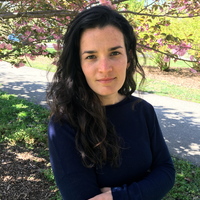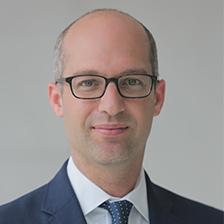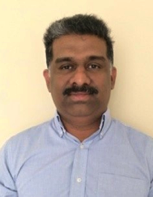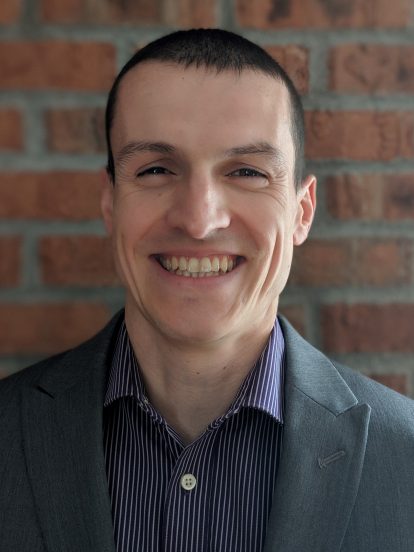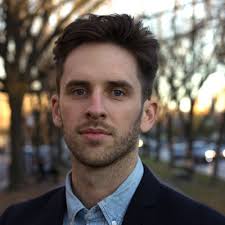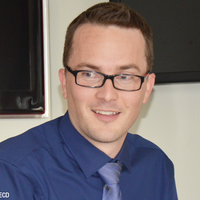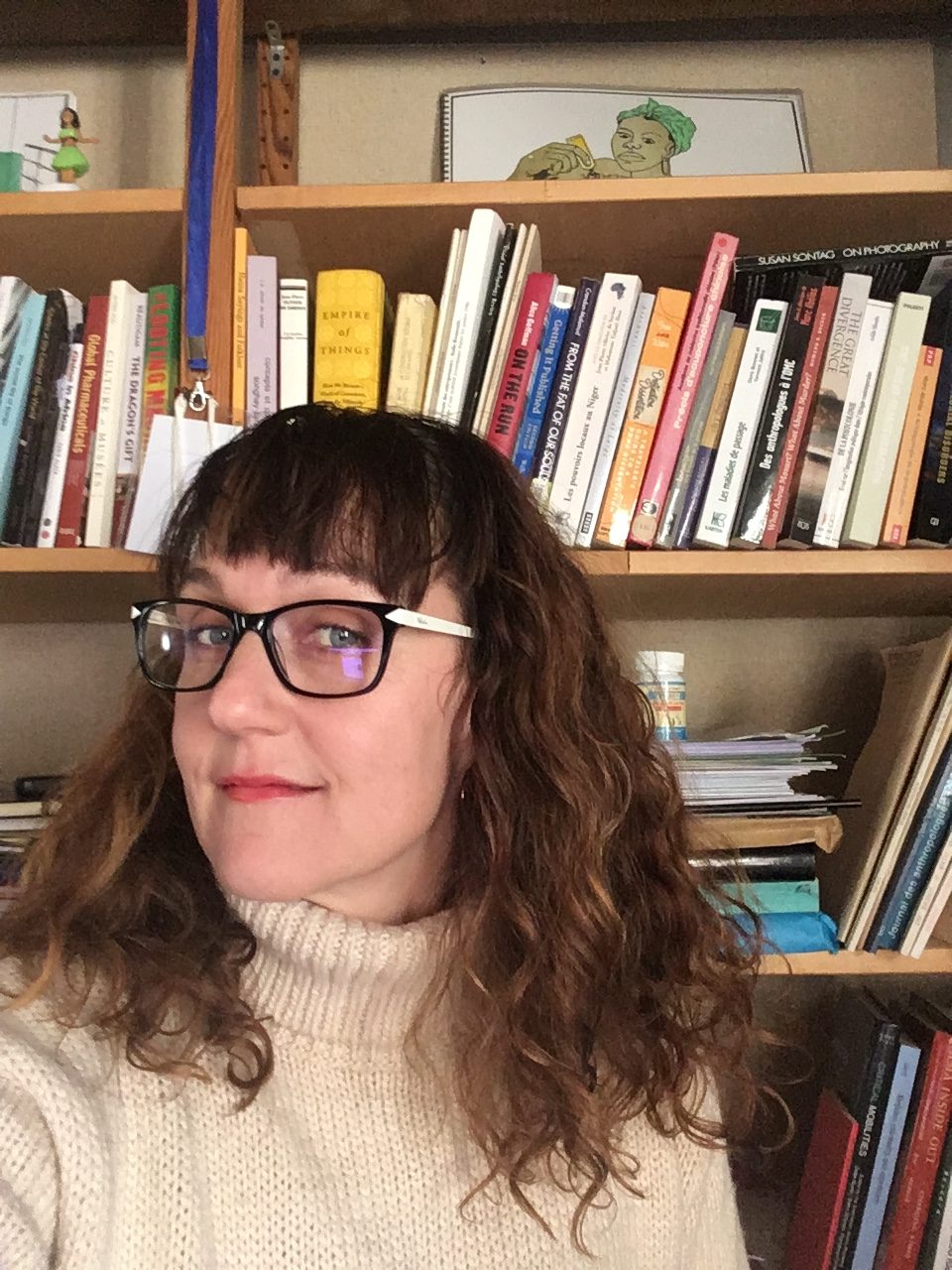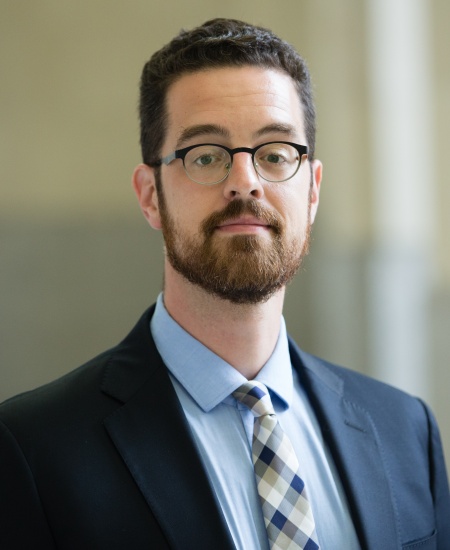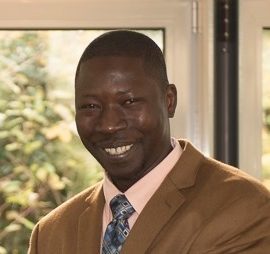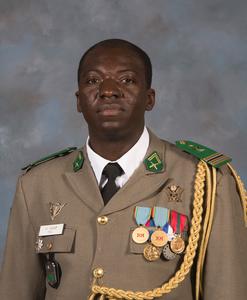Three Questions To Our Guests
In this section we ask three questions to the guests of our Sahel Seminars.
Dr. Robyn d’Avignon
Judd Devermont
Dr. Mathews Paret
Dr. Frédérick Madore
Joe Penney
Dr. Olivier Walther
Dr. Kelley Sams
Amb. Alexander M. Laskaris
Dr. Alex Thurston
Dr. Fallou Ngom
Dr. Matt Kirwin
Lt. Col. Yssouf Traoré
Dr. Robyn D’Avignon
Assistant Professor of History, New York University
In considering indigenous mining institutions, how does race and gender particularly influence modern participation in artisanal mining?
This is an excellent, and complicated, question. I will stick to the case of artisanal gold mining, or orpaillage in French, in the places I know best: Senegal, Mali, and Guinea. Both men and women participate in orpaillage in these regions, although the division of labor is deeply gendered. With few exceptions I am aware of, only men dig underground, while women remain at the surface: operating pulley systems and panning for gold in localized streams and rivers. The washing and processing of gold is also considered “women’s work,” although it is not unusual to see young men, particularly migrants, engage in this labor as well.
Some artisanal mining sites are exclusively mined by women, but these tend to be shallow-pit alluvial deposits, whereas male labor is concentrated on hard-rock or lode ore mines. In terms of race–or what, in some circumstances, might be understood as ethno-linguistic differences–there are a number of historical factors at play. Up until the second half of the twentieth century, Mande-speakers–who claim an ancestral relationship to the Malian empire–dominated the gold mining sector in Senegal, Mali, and Guinea. But with the Sahelian famines of the late 1970s/1980s and the gold boom of the late 1990s/ early 2000s, men and women from diverse ethno-linguistic backgrounds have entered orpaillage. In the deeper past, orpaillage was considered the domain of non-Muslims and practitioners of Mande ancestral religious traditions. This, too, has changed as most orpailleurs are now Muslims regardless of their ancestral backgrounds. However, as I explore in my book monograph, tensions surrounding the perceived relationships of orpaillage to pre-Islamic or non-Islamic ritual practices shape conflicts among orpailleurs and debates over the moral status of gold wealth in diverse West African communities.
In which geographical regions of your research have you found the most local activism/mobilization, if any, against corporate mining and subterranean property rights?
Community-based activism against corporate gold mining firms in West Africa remains, on the whole, far less developed than in Latin America and in Papua New Guinea. In Francophone West Africa, this appears to be related to the fact that corporate or “industrial-scale” mining is relatively recent–growing in the past two decades. There is also less of a civic protest culture in some West African states than in Latin America, where there is, in many countries, a long history of worker unionization in the extractive sector, no less. That said, there are a growing number of protests organized in Ghana, Guinea, Cote d’Ivoire, and Senegal against mining corporations and state actions and policies in mining zones. There is also increased political organization among different groups of “artisanal” miners–known as orpailleurs in much of Francophone West Africa, galamsey in Ghana, and diggers in Sierra Leone and Liberia–demanding increased mineral rights and recognition by the state, particularly in the face of growing corporate encroachment on mineralized land. What you have in much of West Africa, today, is a competitive mineral frontier, where “artisanal” and “industrial” miners compete for the legal–and moral–sanction to mine.
Can you tell us more about where you envision your project heading?
I am currently finishing a book project based on roughly ten years of research on orpaillage in southeastern Senegal, Mali, and Guinea. The book is tentatively titled, Shadow Geology: Gold and Subterranean Knowledge in Savanna West Africa. There are a couple more articles I envision publishing on material that did not quite fit into the monograph but deserves its own space. For example, I am collaborating with an anthropologist on an article about “Geology as Ethnography”–an exploration of the kinds of ethnographic knowledge produced by geologists working in various time periods and places.
As for future projects, my heart and my motivation for pursuing a career in African history in the first place resides in the region of Kedougou in southeastern Senegal. In future years, I plan to start a second long-term project, a kind of political history of southeastern Senegal as a place of refuge: for ethnic and religious minorities during the Atlantic period and political refugees from Guinea during the early decades of independence. I am thinking of southeastern Senegal as a maroon landscape–a term we often hear in reference to semi-autonomous communities of people of African descent living in mountains and swamplands in the Americas. But remote environments in West Africa also lent themselves to the creation of maroon communities whose political and social biographies remain poorly understood by historians.
Judd Devermont
Director of the Africa Program at the Center for Strategic and International Studies (CSIS)
You recently moved from the intelligence community to the Center for Strategic and International Studies (CSIS). What do you like most about working at a think tank?
One of the benefits of working at a think tank is the opportunity to engage with a broader audience about sub-Saharan African issues. Through my written work, social media presence, and public events, I am able to have a conversation with a wider range of experts, including academics, entrepreneurs, and officials from the continent. I am particularly proud of our podcast “Into Africa” which showcases different voices and presents fresh takes on key developments.
Moreover, I have welcomed the chance to further develop my thinking about U.S. policy and toolkit toward Africa. It has been very rewarding to review the history of U.S.-Africa relations and spark a discussion about what has worked and what hasn’t in the decades since the end of the Cold War. I am hopeful that this process will result in new ideas and new approaches to advance shared objectives in the region.
How is urbanization transforming Africa’s politics and security landscape?
Sub-Saharan Africa’s future is urban, and this transformation is upending African politics and security environment. In our recent brief, “The Game Has Changed: Rethinking the U.S. Role in Supporting Elections in Sub-Saharan Africa,” we note that urban dwellers are more likely to criticize the ruling party than rural counterparts and appear more adept at outmaneuvering government controls on information. They are also well-positioned to take to the streets to press for reforms and political change; the Armed Conflict Location & Event Data Project (ACLED), for instance, recorded 3,791 protests in 2018 compared to only 653 demonstrations in 2008. I believe there is similar dynamic underway in the security realm, including the emergence of more sophisticated, globally-connected criminal networks. I highly recommend David Kilcullen’s Out of the Mountains: The Coming Age of the Urban Guerilla, which has informed a lot of my thinking on this topic.
Should Western countries pay more attention to the political drivers of conflicts in the Sahel?
Yes. Since 2012, Western countries have focused on resolving the security crisis first and addressing the socioeconomic and political challenges second. It is an understandable approach, which is based on the theory that military action will open space for more holistic political and economic solutions. However, it has been seven years and the situation continues to deteriorate. I believe we need to start asking harder questions about the incentives and disincentives of Sahelian governments to address political and economic drivers, and acknowledge that security gains are ephemeral if regional governments are not committed to tackling underlying grievances. It is high time that we question our priority focus areas and sequencing, as well as elevate Western engagement on political drivers in the Sahel.
Dr. Mathews Paret
Associate Professor of plant pathology, University of Florida
How do you explain differences in productivity of vegetable crops between Niger and Benin?
In Benin, the fresh vegetables productivity was at 4,100 kg/ha in 2012, and it has increased to 14,000 kg/ha by 2017. This increase in productivity has been made possible by significant investments in disease resistant varieties and effective training program for farmers on cultural, biological and chemical control options for diseases by the Institut National des Recherches Agricoles du Bénin and other local and international organizations (including my lab since 2012). By contrast, the fresh vegetables productivity was at 16,500 kg/ha in 2012 in Niger, and it has significantly decreased to 9,500 kg/ha in 2017. Common vegetables in Niger include tomato, cucurbits, and pepper and primarily produced in locations with availability of water sources, which are limited. A majority of vegetable farmers in Niger produce crops in larger area than farmers in Benin. The Institut National de la Recherche Agronomique du Niger and other local and international organizations (including my lab since 2016) are engaged in development activities in the vegetables sector, and significant investments are needed in Niger in the coming years to improve productivity of vegetables crops.
What is the main challenge related to promoting agricultural innovation to illiterate farmers?
Illiteracy among farmers is a major challenge in promoting agricultural innovation. For example, many plant diseases (pathogenic bacteria, fungi and viruses) affect vegetable crops in Niger causing significant yield losses (10-50%). A first and foremost step in training farmers is to make them understand what microorganisms are, and how management strategies differ between different groups of microorganisms, and also different genus and species with each group of plant pathogenic microorganisms. It is challenging to communicate how to manage a vegetable disease if the farmers do not have a baseline conceptual understanding of microorganisms. The negative impact of this is farmers adopting practices for managing vegetable crop issues based on what they could visually see (insect pests), and typically they end up treating all plants with insecticides, even when the cause of the disease may be a bacteria, fungi or virus and an insect may not be involved.
Tell us about the new lab that you are setting up in Niger?
My lab has been collaborating with Dr. Rachidatou Sikirou at the Institut National des Recherches Agricoles du Bénin and Dr. Banito Agnassim at the University of Lomé, Togo for establishing a fully functional first plant disease diagnostic lab in each country with funding from the Conservation Food and Health Foundation (CFHF) from 2012-2019. These labs include personnel trained in plant pathogen diagnostics using culturing of microorganisms, microscopy and antibody-based assays for rapid detection of pathogens and equipments for diagnostic purposes. They are also making successful management recommendations to farmers after diagnosis of pathogens and guide farmers before planting on use of cultural methods to minimize risks of plant diseases, use of disease resistant varieties and biological and chemical control options. I am in the process of establishing a first time diagnostic lab facility in Niger with funding from CFHF (2017-2019) under the leadership of Dr. Basso Adamou at the Institut National de la Recherche Agronomique du Niger. Most importantly all these labs in Benin, Togo and Niger are interconnected in sharing information about emerging plant pathogens and thus are forming a strong regional network in West Africa with support from my program.
Dr. Frédérick Madore
Postdoctoral fellow, University of Florida
Why have digital media reinforced dominant Muslim leaders in Burkina Faso?
Numerous studies on Islam and digital media elsewhere in the Muslim World have claimed that the Internet subverts traditional models of religious authority. However, in Burkina Faso, digital media have tended so far to reinforce the position of dominant Muslim leaders. A vast majority of the sermons available on some of the most popular Burkinabe Islamic websites such as Islam.bf or Daawatoul Islamia are those of prominent Islamic figures of the country who have studied in the prestigious universities in the Arab world and are close to Salafi currents. Yet, we do not really see the emergence of new figures who first gained popularity on the Internet. You need to be known in the offline world to thrive online. However, very few Muslim religious authorities are digitally literate or even use digital media by themselves. They have the tendency to rely on younger Muslims to put their religious content online.
Do Muslim associations challenge state secularism in Burkina Faso?
Muslim representatives promote, to a large extent, a conception of secularism shared by most leaders of the other confessional groups in Burkina Faso. Rather than a strict French laïcité, they consider it as a model according to which the state plays a passive role that allows the visibility of religion in the public sphere and guarantees equity among all faith-based groups. Thus, Muslim leaders are not calling into question the secular nature of the state. They are instead increasingly demanding to be treated even-handedly by the Burkinabe state as they did at the Consultative Council on Political Reform in 2011 and at the National Forum on Secularism in 2012. One of their main grievances concerned the unrepresentativeness of religious authorities appointed to state institutions. A lot of Muslims deplore the fact that the state usually allows them to nominate only one representative compared to two for Christians (one each for Catholic and Protestant), even though Muslims form more than 60 percent of the population.
On November 30, 2016, the Burkinabe government announced a draft bill on religious freedoms aiming to fill the legal vacuum regarding the application of secularism. A month later, the Federation of Islamic Associations of Burkina (FAIB) issued a lengthy press release to express its deep concerns over certain provisions of the text, particularly about a possible ban on occupying public streets for prayers and wearing the veil in the public administration. The FAIB concluded its statement by calling for the withdrawal of the bill, which was done two days later.
Can you tell us more about your new project related to the digital humanities?
Despite the recent surge in popularity for the digital humanities, very few projects to date have sought to mobilize the potential for digital tools to develop research on Islam in sub-Saharan Africa. Although African archives in the postcolonial era are usually scattered, disorderly and partial, it is quite possible to build a rich corpus of written sources. In the course of my doctoral research, I digitized and organized more than 7,000 newspaper articles on Ivorian and Burkinabe Muslim communities, along with material from some 1,000 varied Islamic publications, to create an original database. Building on this expertise, I intend to create an online digital database containing archival materials, newspaper articles, Islamic publications, recording of interviews, videos, and photographs related to Islam in West Africa. I plan to also include an online bibliographic database on Islam in the region.
Joe Penney
Independent journalist and photographer
What are the strategies developed by the EU to stop trans-saharian migration?
The EU pays Sahelian countries to develop programs to stop migration, but perhaps its most important work is in Niger, where it will pay the government one billion euros in development aid through 2020. The Issoufou administration has ordered its military to stop all non-Nigeriens from crossing the border into Libya and arrest the drivers taking them (Nigerien nationals can still cross the border to Libya freely however). The migrants themselves are brought to the IOM, where they are offered a free trip back to their countries of origin. The EU covers the costs of these repatriations.
In Libya, the EU helps train and finance the Libyan Coast Guard to detain migrants and smugglers trying to cross the Mediterranean. The UN says the Libyan Coast Guard severely abuse migrants and participates in the slave trade. The EU’s anti-migrant policies have led to the highest per capita rates of migrant deaths in the Mediterranean in recent years, as well as an unquantified uptick in the number of deaths in the Sahara. The EU has made it clear it would rather see African people die in the Sahara and Mediterranean than reach its shores.
You covered the development of a drone base in Dirkou in the north of Niger for the New York Times. Why would the CIA invest in such a remote location?
The source that revealed the base to me also told me that the CIA is investing long term in the Sahel/Sahara region and is concerned in particular about potential ISIS access to oil installations in southern Libya, as well as militants in the Lake Chad region. By operating in such a remote area, the CIA will be closer to Libya and it will stay out of the public eye in a way that it might not be able to in other areas of Niger. The CIA has established a similar remote drone base in Saudi Arabia, and the Trump administration has lifted certain restrictions that were put in place by the Obama administration.
You are the founder of the Sahelien.com, an online news website based in Bamako. What are the main challenges related to publishing from Africa?
The main challenges that we face at Sahelien.com are the growing insecurity in the region, the high costs of internet and communication, and the lack of an advertising market. The insecurity in places like Kidal has meant that it has become harder and harder for our correspondents to work freely there. Violence has spread to the center of the country, and even journalists who are from the region have a hard time doing work around Mopti. The extremely exorbitant cost of internet and communication (Mali has some of the most expensive internet in the world) means that we often have difficulties uploading and downloading relatively small video files. The lack of a solid advertising base within the country also limits the income we can get from companies within Mali.
Dr. Olivier Walther
Assistant Professor, University of Florida
What are the advantages of using Social Network Analysis as a scientific tool in your research field?
Social network analysis (SNA) is a formal approach that seeks to piece together all the relations within a social network. SNA allows researchers to visualize, understand, and analyze social structures that are especially difficult to grasp using more conventional approaches, such as qualitative interviews or econometrics. It is especially well adapted to understand fluid and informal organizations which cannot be easily subdivided into predetermined categories, such as cross-border traders, violent extremists or policy makers. SNA is also a very efficient tool to map how social networks connect different people across different countries. For this reason, it is increasingly used by geographers who want to understand how space can influence social ties and, reciprocally, how social ties contribute to form embedded communities.
Tell us more about the new perspective SNA opened when analyzing your data?
Social networks provide opportunities – or social capital – to entrepreneurs. They facilitate the diffusion of innovation, information on markets and prices, and resources. They also provide trust when formal institutions are weak and unable to enforce contracts. Well-connected entrepreneurs usually do better than poorly connected ones because they can rely on friends, family members and business partners. Social networks can also provide constraints on individuals, in the form of social obligations. The problem is that we know very little about these networks in Sub-Saharan Africa. Many studies have collected information on who the traders are but relatively little is known of their actual business connections. Our current research project funded by the OECD contributes to fill this gap by showing how trade relies on social networks in West Africa. With our partners from the University of Niamey, we have conducted a survey between Niger, Nigeria, and Benin to reveal the structure of the rice trade network, in which women are particularly active. Our goal is to assess the impact of national borders on economic exchange, highlight gender-specific roles within supply chains, and examine social, cultural and economic barriers that limit women’s access to and participation in markets.
Our work in West African networks suggests that gender is a strong predictor of social ties. In other words, the marginalized position of women in trade networks is due to their lack of social capital. Men have more business relations, they are better connected to people that also are well connected, and they are able to bridge disconnected parts of the trade network. One explanation is that the rice trade network forms a very short chain of actors in which the most central position is occupied by a small number of urban wholesalers who control the follows of cereals. These brokers are able to buy large quantities of rice, stock cereals in warehouses, and sell them for the best price. Very few women can play a similar role because they lack access to formal credit. As a result, many women are confined to either rice production or small-scale retailing.
Dr. Kelley Sams
Visiting Research Faculty, University of Florida
What are the medical issues in West Africa related to the circulation of fake medications?
My research about the circulation of medication has not specifically focused exactly on their chemical quality or biomedical efficacy. As an anthropologist, I am more interested in representations and conceptions of quality. For example, how people in Niger view medications manufactured in France vs. those manufactured in China; or how programs doing mass drug distribution shape information about the medications they distribute. My key research questions tend to center on exploring topics like these while also looking at behaviors surround medication-use and thinking about all of this in a broader geopolitical context.
What have you learned from doing fieldwork with a child in rural Niger?
Oh, lots! Having my three-year-old son with me during 13 months of field work in rural Niger was not easy, but it also taught me many things, especially concerning healthcare in this context. I describe my struggles navigating the Nigerien healthcare system when my son was sick with malaria in a chapter in the forthcoming edited book Mothering From the Field, currently in publication with Rutgers Press. Although my struggles keeping my son well were not comparable with those faced by Nigerien mothers every day, they did allow me to develop an experiential knowledge beyond what I learned from conducting interviews and focus group discussions. It was also pretty amazing watching how quickly my son learned Hausa (the local language spoken in the research site) and hearing his reports on the kid conversations that took place away from adult ears.
I just left EHESS/Norbert Elias Center in Marseille, France where I was based for the past eight years to come to UF in August. My current position is as a two-year Visiting Research Faculty in the Center for Arts in Medicine where I am supporting the Creating Health Communities: Art and Public Health initiative. This national initiative is being led by UF to promote the use of arts and culture to improve health and wellbeing in the US. Working on a US-focused project is very different for me since I have been working in and on sub-Saharan Africa since I was a Peace Corps volunteer in the late `90s! However, I find that many of the research skills that I developed in places like Niger or Nigeria can be adapted to the US context. I firmly believe in the power of the arts to transform lives and to transform the world, so I feel really fortunate to be able to work on a project like this. I am an alumnus of UF’s College of the Arts where I graduated with a BFA in fine art photography many years ago. I hope that I can continue to combine my interests in health and art and bring this back to the Sahel in the upcoming years.
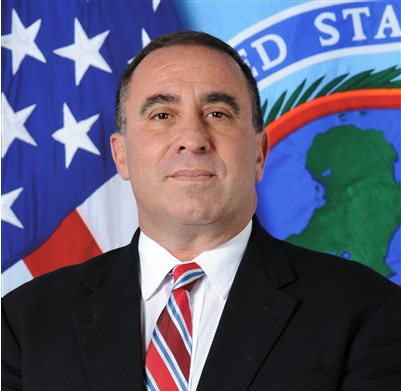 Amb. Alexander M. Laskaris
Amb. Alexander M. Laskaris
American Ambassador
How can AFRICOM contribute to make African governments better off the battlefields?
Civil military affairs is a key component of all our interactions with African military partners, underpinned by the mission to help build or strengthen the connective tissue between citizens and their security services. Any training we do with partner militaries involves modules on the laws of armed conflict and international humanitarian law. All of our work in the field builds on the formal instruction and gets into teaching by modelling the behaviors that we think are key to success. In addition to focusing on the legal bases for the conduct of security forces, we also focus on the strategic implications of strong bonds between security services and citizens. As we have learned over the last 17 years, the local population is the key terrain in a counter-insurgency or counter-terrorism effort.
Would you agree that the United States are essentially dealing with insurgencies rather than terrorism in the Sahel?
Our overall assessment in the Sahel is that we are dealing primarily with governance crises. The violent extremist organizations in the Sahel — such as Boko Haram, AQIM, ISIS-GS and MLF — have multiple simultaneous natures: they feed off of ideology, grievance, criminality, ethnic nationalism and poverty. There is no clear line between insurgencies and terrorist groups … they can and do have multiple natures. The vulnerability is that foreign terrorist organizations can find and exploit cleavages in local societies, offering their support to aggrieved groups as well as to criminal organizations. While there may necessarily be military elements to longer-term solutions, our view is that good governance — meaning service delivery, impartiality and the provision of security — is the long term solution to the crises.
Why do African states present conflicts as exogenous while they often result from local grievances?
In our view, these are primarily local conflicts that have the potential to spread beyond borders, and to present an opening for outside actors — terrorists or criminals — to capitalize on opportunities presented by regions in which state authority is absent or ineffective.
Dr. Alex Thurston
Assistant Professor, University of Cincinatti
Could you tell us a bit more about your new book project “Jihadism and Local Politics: Cases from Northwest Africa”?
My manuscript examines different interactions between jihadist groups and local politics in the Sahel and North Africa. The project focuses heavily on Mali but also includes cases from Libya, Mauritania, Niger, and Algeria. With the project, I am trying to understand variations in jihadist mobilization and activity across this large region. I have been dissatisfied with analytical approaches that emphasize global jihadist thought at the expense of local context, and I have been equally dissatisfied with approaches that treat jihadists as run-of-the-mill insurgents and rebels. Through the vignettes and cases in the manuscript, I look for distinctive patterns where jihadists have to improvise and compromise in order to adapt their doctrines and goals to rapidly shifting circumstances, and I look for patterns in how local political elites respond to jihadist mobilization.
Why did some political leaders cut all ties to Al Qaeda and go back into mainstream politics after the French intervention in Mali in 2013?
In January 2013, following the French intervention in Mali, some leaders of Ansar al-Din broke away to form the Islamic Movement of Azawad, which subsequently became part of the High Council for the Unity of Azawad. In interviews, some of these leaders told me that Iyad ag Ghali – the founding leader of Ansar al-Din and now head of the al-Qa’ida-affiliated Jama’at Nusrat al-Islam wa-l-Muslimin (JNIM, the Society for Supporting Islam and Muslims) – had violated his original understanding with them. Specifically, ag Ghali had extended the war into central Mali, and had begun ignoring his fellow Tuareg politicians’ advice in favor of listening to the counsel of hardliners from al-Qa’ida in the Islamic Maghreb (AQIM). The politicians who broke away also knew that amid the French intervention, Ansar al-Din was becoming completely politically anathema to Western governments and regional powers, and they wanted to preserve a future for themselves in mainstream politics. Nevertheless, questions persist about what possible relationships there may still be between ag Ghali and some of these politicians. News outlets such as Jeune Afrique have repeatedly, and credibly, suggested that ag Ghali may be in contact with these politicians as a means of influencing the wider politics of northern Mali.
Should Jihadist groups such as Ansar al-Din also be part of the peace negotiations in Northern Mali?
I think so. Mali’s Conference of National Understanding, held in March/April 2017, formally recommended that the Malian government open dialogue with Malian-born jihadists, especially Iyad ag Ghali and Amadou Kouffa. I think that idea would be worth trying, and I think that France and the United States should not attempt to stand in the way of such a dialogue. The government of Mali should not compromise on Mali’s territorial integrity or democratic system, but there may be other areas of compromise that the government could find with certain jihadists.
Dr. Fallou Ngom
Professor, Boston University
Could you explain the social and religious importance of Ajami in Muslim Africa?
Ajami plays important social and religious functions in Muslim Africa. It is used for both religious and non-religious matters. It is used to record major events, genealogies, write personal letters, and to keep financial and family records, among others. It is also used to teach about Islam. Since many African Muslim scholars are bilingual or multilingual (fluent in Arabic and one or several African languages), they have produced materials in Ajami to teach various religious subjects to their local audiences.
Can local interpretations of the Quran help counter violent extremism on the region?
Considering the Ajami documents I have collected from the Wolof, Fuuta Jalon Fula, and Senegambian Mandinka, there are Islamic teachings that can be found that emphasize the ethical and spiritual dimensions of Islam, and reject extremism and violence. There is even one poem by Muusaa Ka called Taxmiis bub Wolof which celebrates ethnic and linguistic diversity as a form of divine blessing to humanity.
Have African languages become more important politically in the region?
The pervasive reference to parts of Africa as “Francophone,” “Anglophone,” or “Lusophone” gives the misleading impression that people speak more European languages than their own in Africa and that African languages are not important. Nothing could be further from the truth. African languages have always been important across Africa. European languages are spoken by no more than 20 percent of the population, and mostly the Western-educated elite who hold power. As soon as one moves away from urban areas or goes to local markets, he will soon realize the vitality of African languages and that he is not in a “Francophone”, “Anglophone”, or “Lusophone” land, but rather in a Wolofophone, Pulaarophone, Mandinkaphone, or Swahiliphone land, to name only these!
Dr. Matt Kirwin
Lecturer, George Washington University
What is the attitude of local populations towards Sharia law in the Sahel?
According to public opinion surveys, Sahelians are most likely thinking of milder forms of Sharia that govern civil issues such as marriage and inheritance. Large majorities in Niger (85%), Mauritania (84%) and Senegal support the implementation of Sharia in their country. Fewer in Nigeria (35%) and Burkina Faso (16%) feel this way, two countries that have significant non-Muslim populations. Mali is an interesting case in that 6-in-10 supported Sharia in 2009, but it dropped to 24% in 2012 after Malians experienced, first hand, a severe form of Jihadi-implemented Sharia. Today, about half of the surveyed population supports Sharia law.
To what extent do Sahelians support extremist groups like Al Qaeda in the Islamic Maghreb?
Our surveys tend to show that few view Al Qaeda in the Islamic Maghreb in positive terms. In Mauritania, 6% say the group has a positive influence, but only 3-4% feel that way in Senegal, Burkina Faso, Mali, Nigeria and Niger. It is important to keep in mind the margin of error is +/- 4 when considering such small percentages.
What are the main factors that explain local conflicts in the Sahel according to public opinion surveys?
Across the Sahel pluralities in 5 of 6 countries name politics as the primary driver of conflict, yet there is variation by country. In Niger and Mali, for example, about 20% cite land use as the root of conflict. In Mauritania, a country where racial identification is sensitive, 30% cite ethnicity as a driver of conflict. Nigeria is the only country where a large proportion of the population (24%) cites religion as a cause of conflict, probably because the country faces three major conflicts: the jihadist insurrection led by Boko Haram in the north, ethnic tensions in the Middle Belt and violence carried out by armed groups in the Niger Delta.
Lt. Col. Yssouf Traoré
Malian army
What could make the Malian army more effective in countering violent extremist groups?
The most important challenge is developing the capabilities and combat functions of the Malian Army to effectively deny violent extremist organizations sanctuaries and safe havens. The Malian army must be able to gather, disseminate and exploit intelligence through the acquisition of Intelligence, Surveillance and Reconnaissance assets (ISR). It also needs to be able to move and maneuver quickly over great distances integrating ground and air units to protect its lines of communication while adapting its logistics to the nature of the terrain.
How should the money received from the international community for the G5 Sahel be spent?
The money should go to developing the capabilities of the Malian Army through engagements with experienced and skilled western armies. For example, this could be done through training and advice, during joint missions. I also think that the acquisition of technologies that proved to be essential in counterinsurgency operations which took place in the Middle East should be a priority.
What are the main tactical challenges faced by the Malian army when fighting in the Northern regions?
In Mali, violent extremist organizations are often elusive. They hide in villages and among the population, using Improvised Explosive Devices and ambush tactics. Another challenge is related to the size of the area of operations. Violent groups have access to safe havens in places that are out of reach, such as the Adrar des Ifoghas Mountains in Northern Mali, or out of sight thanks to forest cover. They also have accomplices among the armed groups which have signed the Agreement for Peace and Reconciliation in Mali.
